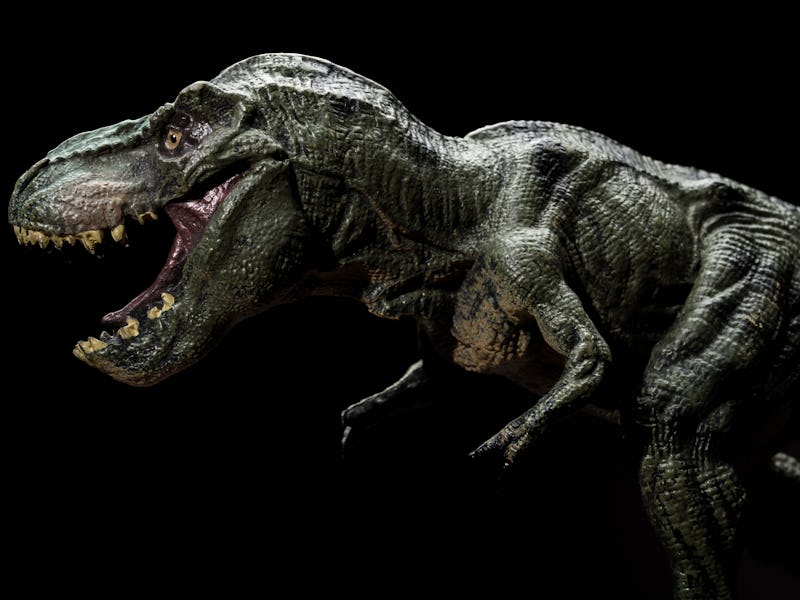Dinosaurs: New study upends a belief many learned in elementary school
These dinosaurs were adapting to their environments earlier than we realized.

When studying creatures that roamed the Earth tens of millions of years ago, there are bound to be some gaps in our knowledge — take the idea that dinosaurs were massive, cold-blooded creatures.
While many of them fit that description, new research might upend the belief all dinos were cold-blooded.
Dinosaurs indeed started out as cold-blooded, but over time, they evolved to keep up with changes in their environment. That means their blood began to run on the warmer side. A new study gets closer to pinpointing exactly when that happened.
Scientists examined fossilized fragments of prehistoric egg shells, dating back 75 million years, to get at the answer. Using a method called isotope geochemistry, the researchers looked at the chemical bonds in the shells’ calcium carbonate minerals. That allowed them to calculate at what temperature the minerals formed, as well as the body temperature of the dino mom that laid the egg, around 35-40 degrees Celsius, or 95 to 104 Fahrenheit.
In warmer areas, body temperature would be similar to outside temperature for both cold- and warm-blooded creatures, making it difficult to discern the reason for the higher body temperatures. So the research team focused on samples from colder places, like Alberta, Canada. They compared dinosaur body temperatures to those of cold-blooded mollusks — which had body temperatures of just 26 degrees Celsius.
The upshot? Dinosaurs must have been at least somewhat able to control their own body temperatures, in order to maintain temperatures higher than mollusks.
The researchers studied samples from three major groups of dinosaurs, sauropods, theropods, and ornithischians. Their analysis provides evidence that these dinosaurs were switch-hitters: They had the ability to toggle between regulating their own body temperature and allowing the environment to change it.
It also shows that the transition from cold to hot blooded happened very early on in dinosaur evolution. Even the samples from the Maiasaura genus — which lived 86 million to 70 million years ago — showed the ability to self-regulate.
The findings appear in a study led by Yale University researchers, published Friday in the journal Science Advances.
Getting hot-headed
Previous research has looked at the ways that Tyrannosaurus rex managed to regulate its body temperature. In September 2019, researchers discovered that the mighty king of dinosaurs had a kind of air conditioning unit in its head — it has two large holes serving as vents to let out the heat — as Inverse previously reported.
That finding “adds to a growing body of evidence that suggests T.rex and other species of dinosaurs were warmer-blooded than we used to think,” as University of Missouri professor Casey Holliday told Inverse at the time.
As it turns out, other dinosaurs had their own versions of this kind of “internal thermostat,” too — it wasn’t all about responding to their environments.
Now, please excuse me as I try to get the chorus of Foreigner’s “Hot Blooded” out of my head.
Abstract: Studying the origin of avian thermoregulation is complicated by a lack of reliable methods for measuring body temperatures in extinct dinosaurs. Evidence from bone histology and stable isotopes often relies on uncertain assumptions about the relationship between growth rate and body temperature, or the isotopic composition (18O) of body water. Clumped isotope (47) paleothermometry, based on binding of 13C to 18O, provides a more robust tool, but has yet to be applied across a broad phylogenetic range of dinosaurs while accounting for paleoenvironmental conditions. Applying this method to well-preserved fossil eggshells demonstrates that the three major clades of dinosaurs, Ornithischia, Sauropodomorpha, and Theropoda, were characterized by warm body temperatures. Dwarf titanosaurs may have exhibited similar body temperatures to larger sauropods, although this conclusion is provisional, given current uncertainties in taxonomic assignment of dwarf titanosaur eggshell. Our results nevertheless reveal that metabolically controlled thermoregulation was the ancestral condition for Dinosauria.